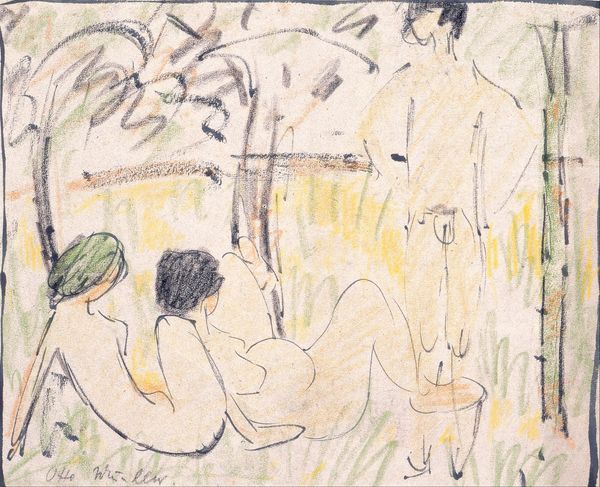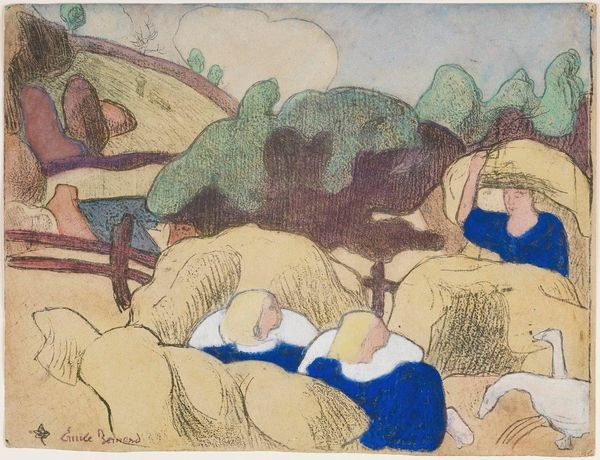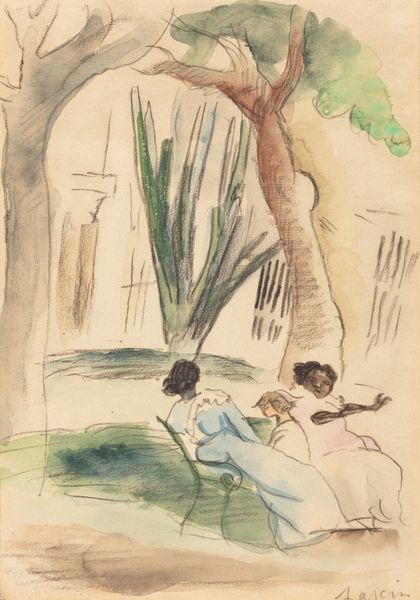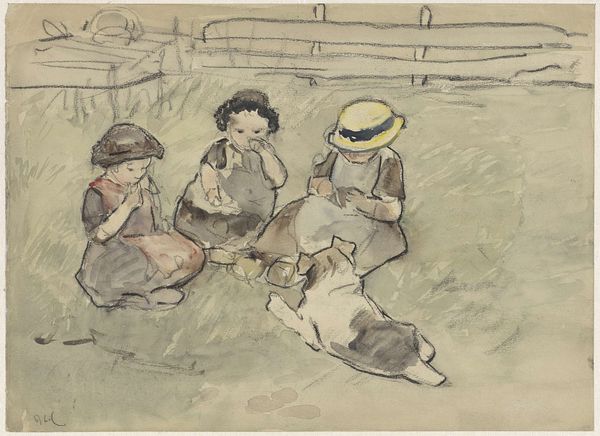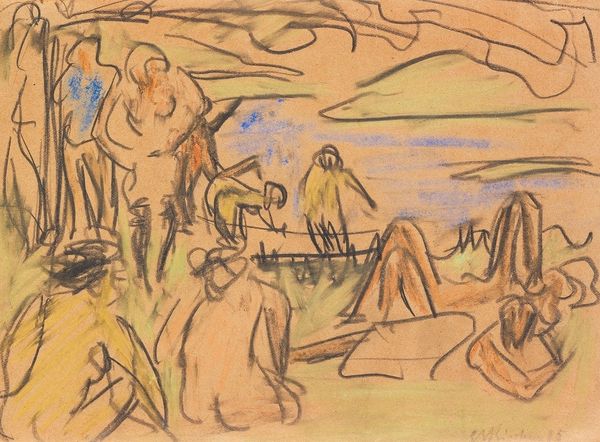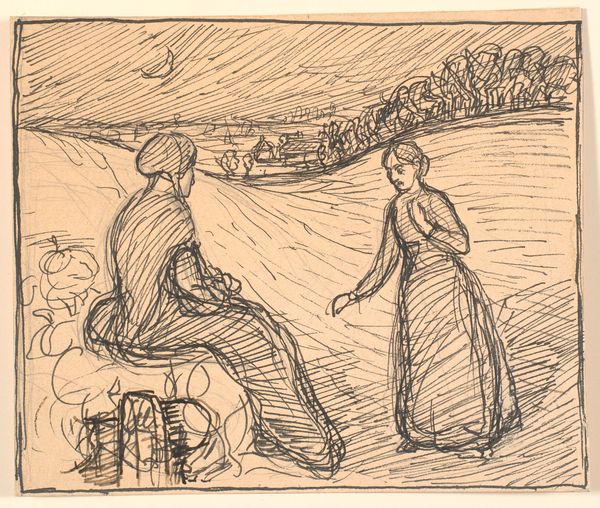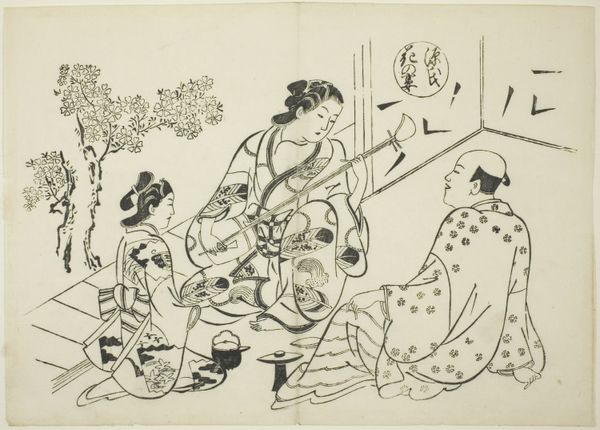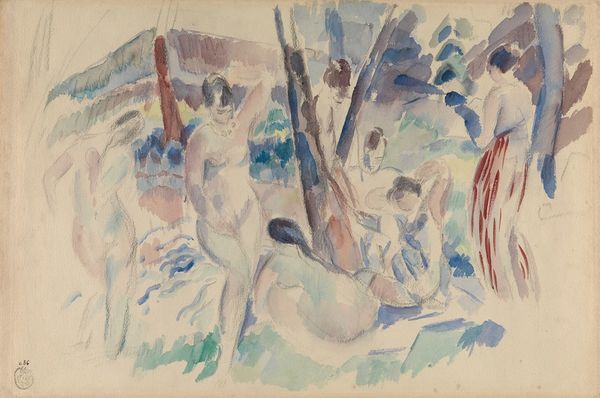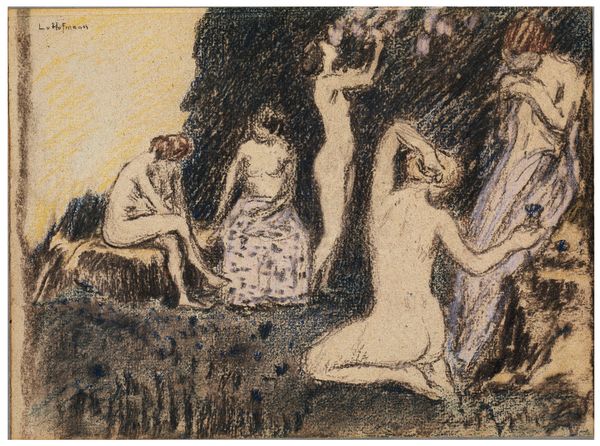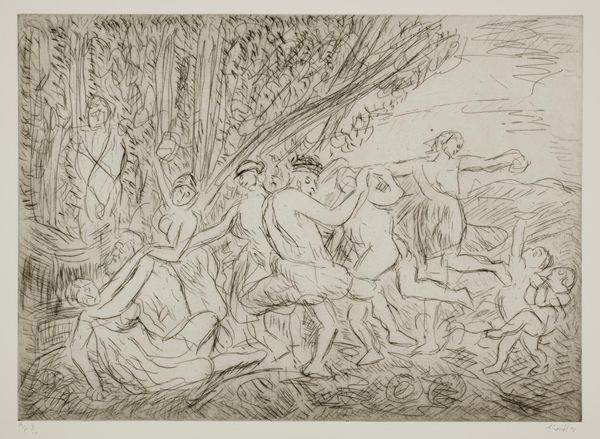
drawing, pencil
#
drawing
#
impressionism
#
landscape
#
figuration
#
pencil
#
genre-painting
Dimensions: height 95 mm, width 180 mm
Copyright: Rijks Museum: Open Domain
Curator: I’m immediately struck by the air of peaceful leisure radiating from this piece. It feels so light and unburdened. Editor: That's a perfect entry point. We're looking at "Groep mensen zittend onder bomen" or "Group of people sitting under trees," a drawing created sometime between 1860 and 1921 by Adolf le Comte. It appears to be rendered with pencil, which certainly adds to that impression of lightness you mentioned. Curator: Absolutely. Notice the stylized trees that visually divide and rhythmically punctuate the figures in their own, separate worlds of reflection, and that ground which has that symbolic colour tone…It recalls memories of childhood summers when the veil between our realities and dreams felt very thin. Editor: Interesting point. These moments captured remind us of class privilege and its implications for leisure and representation in art. Genre painting was highly susceptible to public interpretation during that time. These drawings also highlight impressionism because artists and their public grew bored with historical artwork or romantic paintings of the era. Curator: I can't help but interpret their lack of distinct features not as anonymity but more so their representational of all women across race and status and how those spaces, represented through art, invite personal connection with viewers. This transcends typical artistic movements; rather the image serves the same function across various populations because their shared experience. Editor: Yes, it allows us to project our experiences, but also begs the question: Who has the luxury to rest in a forest? Whose story goes untold as these figures get to relax in plein air? These idyllic landscapes mask a deeper societal discourse. I feel we should highlight the complexity within such simplicity, reflecting the true essence of artistic interpretation and what their work represents as artistic evolution during a specific timeframe. Curator: The universality of that experience doesn't negate these social issues that this era faced as they evolved toward equality between social strata either but shows that artwork has the power to remind us to pause no matter the age or societal constructs that we lived through at any point. It is, undoubtedly, a testament to human perseverance. Editor: Perhaps through appreciating Le Comte's impressionistic drawing, we are seeing, then, the reflection of our present challenges.
Comments
No comments
Be the first to comment and join the conversation on the ultimate creative platform.
